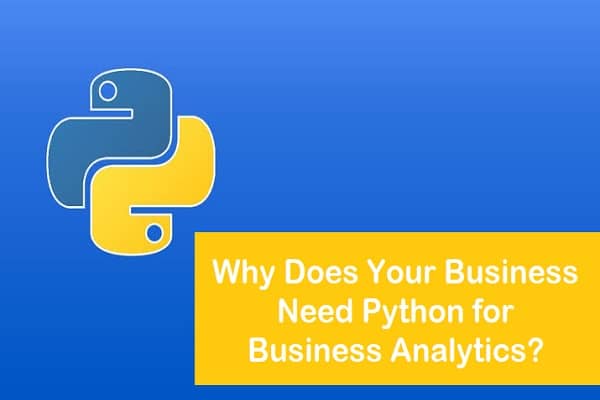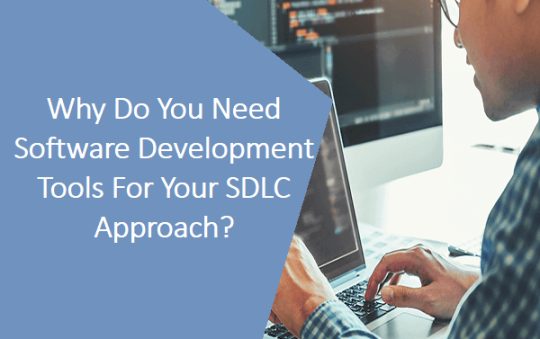Learn why Python is so essential and how it can be used in a variety of businesses and sectors of business analytics.
What is the significance of Python?
Python is a popular programming language for data analysis, web development, system administration, developing automation scripts, and other tasks. Python provides users with the ability to save, read, and manipulate data right out of the box. It also has a thriving ecosystem of open-source packages and libraries. This implies that different roles can utilize Python for various objectives.
Python may be used to practically any area, including healthcare, finance, technology, and consulting. Machine learning algorithms written in Python are being used in the healthcare industry to prevent and diagnose disease, as well as optimize hospital operations. Farmers use Python to anticipate agricultural yields and manage crop diseases and pests with IoT technologies.
Python is one of the most widely used business analytics languages today, and its popularity is rapidly increasing. It’s widely regarded as one of the easiest programming languages to read and learn, with simple programming syntax and commands that imitate the English language. click here for more information!
Python is taking the place of Excel in order to scale commercial choices.
Python and other open-source programming languages, such as R, are rapidly replacing Excel, which is no longer scalable for current corporate demands. For many years, Excel has been the de facto decision engine for businesses. However, it was designed for a world in which datasets were modest, real-time information was not required, and cooperation was not as vital. Open-source programming languages may assist businesses in making better use of their data, and many professions increasingly demand coding ability in order to be data literate.
What role does Python play in business analytics?
Dashboards and business intelligence (Descriptive analytics)
One of the fundamental purposes of business analytics is to describe what has occurred so that patterns and measurements may be evaluated across time. This is based on detailed analytics, and data analysts are usually the ones who do it.
Python is frequently used by data analysts to describe and categorize existing data. They do exploratory data analysis, which involves profiling the data, visualizing the results, and making observations to help define the next phases in the investigation. Python may be used to handle data (through libraries like pandas), automate procedures, and generate visualizations (using Matplotlib).
Learning by machine (Predictive analytics)
Another goal of business analytics is to forecast what will happen in the future. This is referred to as predictive analytics. Machine learning is a subset of predictive analytics that employs simplified statistical algorithms to forecast the future based on historical data and uncover correlations and insights—think Netflix’s recommendation engine.
Python is quickly becoming the language of choice for machine learning, and it’s used to create models for Bayesian networks, decision trees, and much more. TensorFlow is a popular Python framework used by many data scientists to easily access a wide range of supervised and unsupervised machine learning methods.
Science of decision-making (Prescriptive analytics)
Prescriptive analytics, also known as decision science, is the ultimate stage of business analytics that predicts what, when, and why specific events will occur—and then decides what to do with that knowledge. It incorporates data into the decision-making process. Cassie Kozyrkov, Chief Data Scientist at Google Cloud, explores the relationship between decision intelligence and data science in our DataFramed podcast. Click here for more information.
Decision scientists analyze data in the context of business challenges and employ many of the same techniques and tools as data scientists. Because their purpose is to make insights useful, their models and visualization approaches must be designed to convey those insights. Python is frequently used to construct predictive analytics tools such as deep learning, which optimizes results via artificial neural networks.
Also read: Best Router For Parental Controls
Python democratization for business analytics
DataCamp features a robust Python curriculum that is continually expanding. Not sure where to begin? For a selected selection of courses, we invite aspiring data scientists to join our Data Scientist with Python career track.
DataCamp for Business allows employees to keep their skills up to date in all areas of business analytics for firms that value continuous learning.
Conclusion
Python has a huge user community that assists users in resolving programming challenges or faults in the software. Because of its simple syntax, it is straightforward to learn and understand, making it an excellent choice for programmers, data scientists, and business analysts who utilize Python data analysis tools.
Innuy a well-known Python Web Development company, and we can assist you in scaling up your project. We cultivate long-term relationships with our customers and collaborate closely with them to accomplish amazing achievements.
In order to create excellent scalable software as quickly as feasible, our teams leverage agile technologies as well as the most recent productivity tools and processes.




